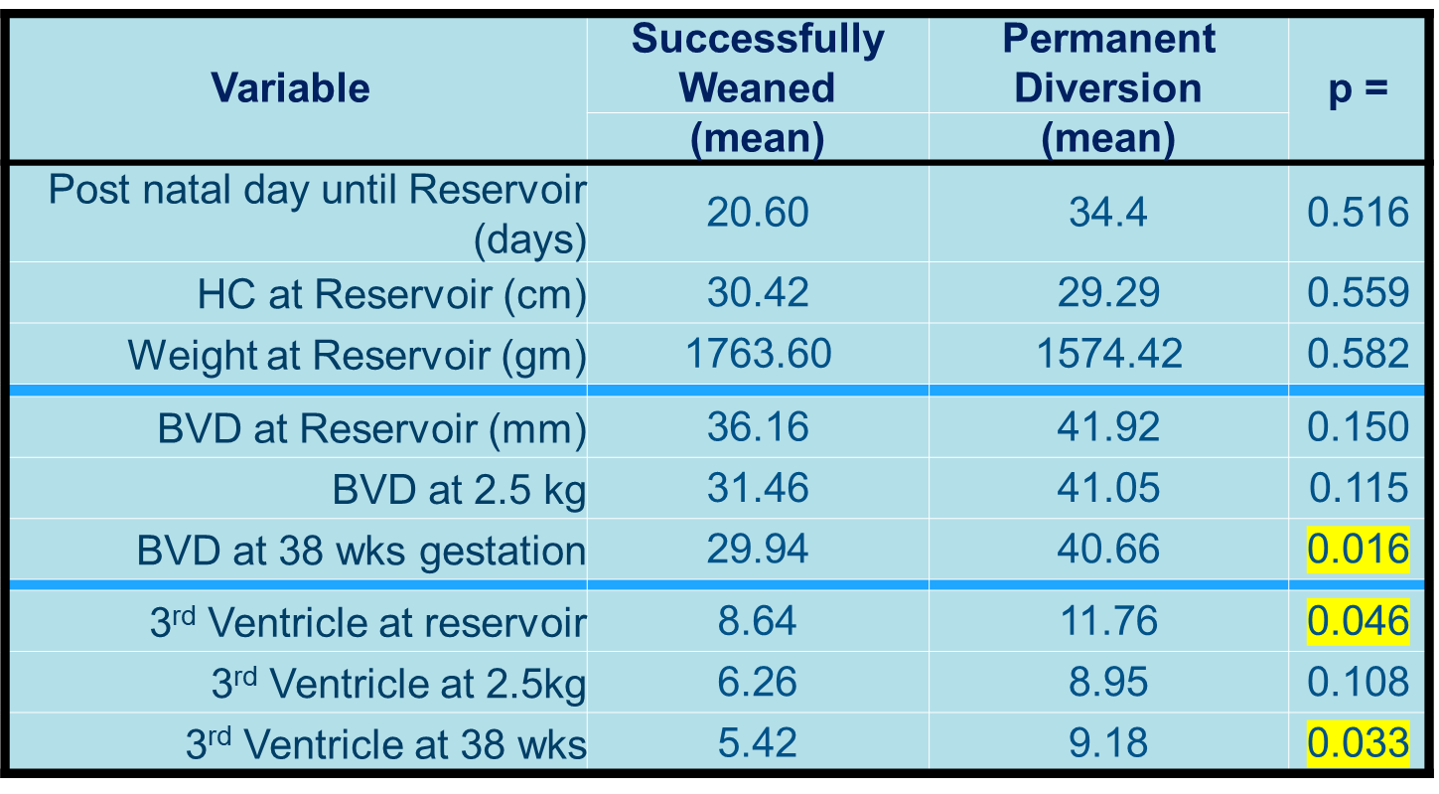Neonatal Neurology: Clinical Research
Neonatal Neurology 6: Clinical 6
126 - Predictive Factors for Definitive CSF Diversion in Post-hemorrhagic Hydrocephalus
Publication Number: 126.338

Lakshmi D. Katikaneni, MD FAAP
Professor of Pediatrics
Medical University of South Carolina College of Medicine
Charleston, South Carolina, United States
Presenting Author(s)
Background:
Post-hemorrhagic hydrocephalus (PHH) portends devastating outcomes in many preterm infants. Recent studies demonstrate a link between earlier intervention, smaller ventricles and haste for intraventricular hemorrhage removal to correlate with improved outcomes. We describe our use of early and aggressive reservoir intervention with a prolonged weaning period prior and how they correlate with CSF shunting.
Objective:
Determine what, if any clinical factors of premature neonates with post-hemorrhagic hydrocephalus may predict the dependence of permanent CSF drainage. With these data we hope to modify protocols to best optimize treatment early on and increase the number of patients in whom VP shunting is required.
Design/Methods:
34 Consecutive PHH infants with reservoirs between January 2016 and February, 2019 were evaluated. 26 patients met inclusion and underwent evaluation including multiple ventricular measurements, head circumference, weight, age and timing of reservoir placement among many other parameters to investigate the link between those weaned versus unweaned from reservoir tapping requiring CSF shunting. Standard tapping = 10ml/kg/day. Shunting was offered at ≥2.5kg. Weaning was initiated at ≥38weeks gestation.
Results:
Six patients were successfully weaned (follow-up 18-36 months). At last follow-up, 19 of 20 patients required ventriculoperitoneal shunting (VPS) (6-42 months). Birth weight (BW) and gestational age (GA) were higher in weaned patients (p=0.03). 3rd ventricle (3rdV) and biventricular diameter (BVD) at 2.5kg demonstrated weaning associations. Average BVD measured 31.4mm and 40.6mm in weaned versus unweaned respectively (p=0.01). At 2.5kg, the 3rdV measured 6 mm and 8.2mm in weaned versus unweaned (p=0.03). Five of 6 weaned patients underwent prolonged tapping past shunting weight of 2.5kg.
Conclusion(s):
Our small retrospective cohort demonstrates statistically significant differences in several factors in PHH newborns requiring shunting versus those successfully weaned. Although birth weight and age are important indicators of disease severity, ventricular size at the time of decision making for CSF shunting was significantly different in those who eventually were weaned. Multi- center cohorts with this aggressive and prolonged tapping/weaning protocol may establish predictive value of these metrics. These data also suggest a potential link between prolonged aggressive tapping and ultimate need for CSF diversion surgery..png)


